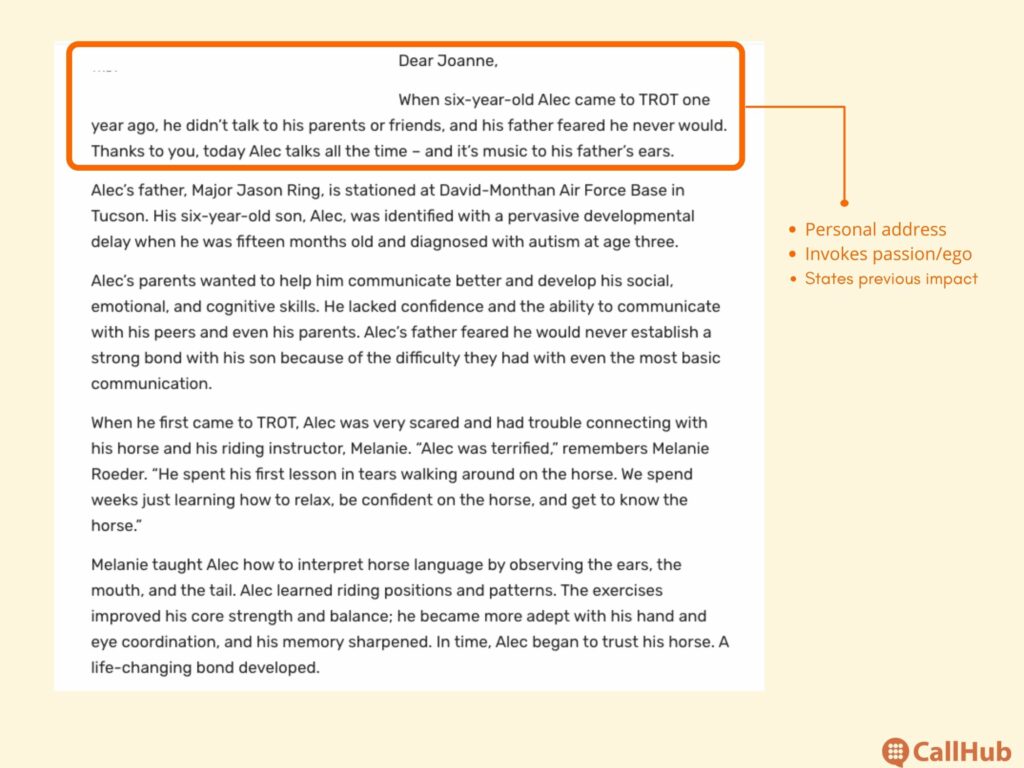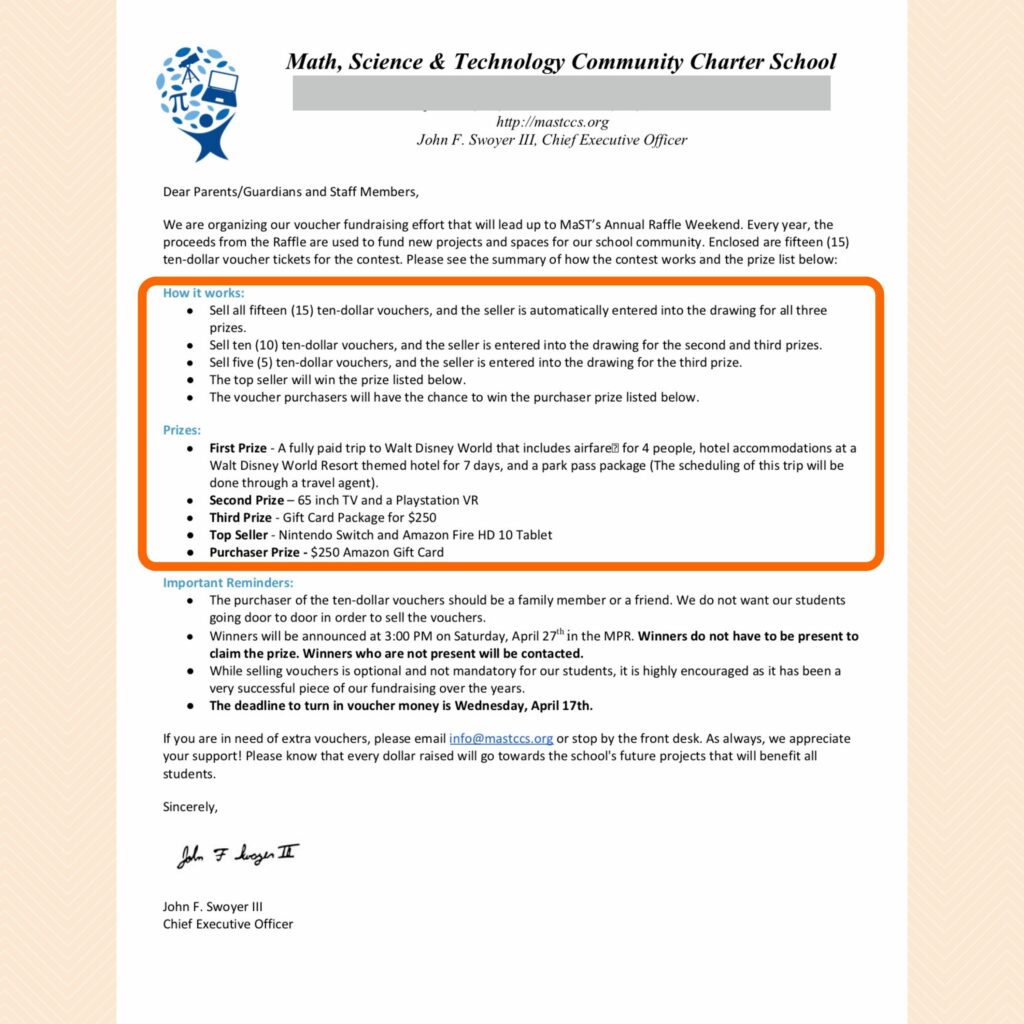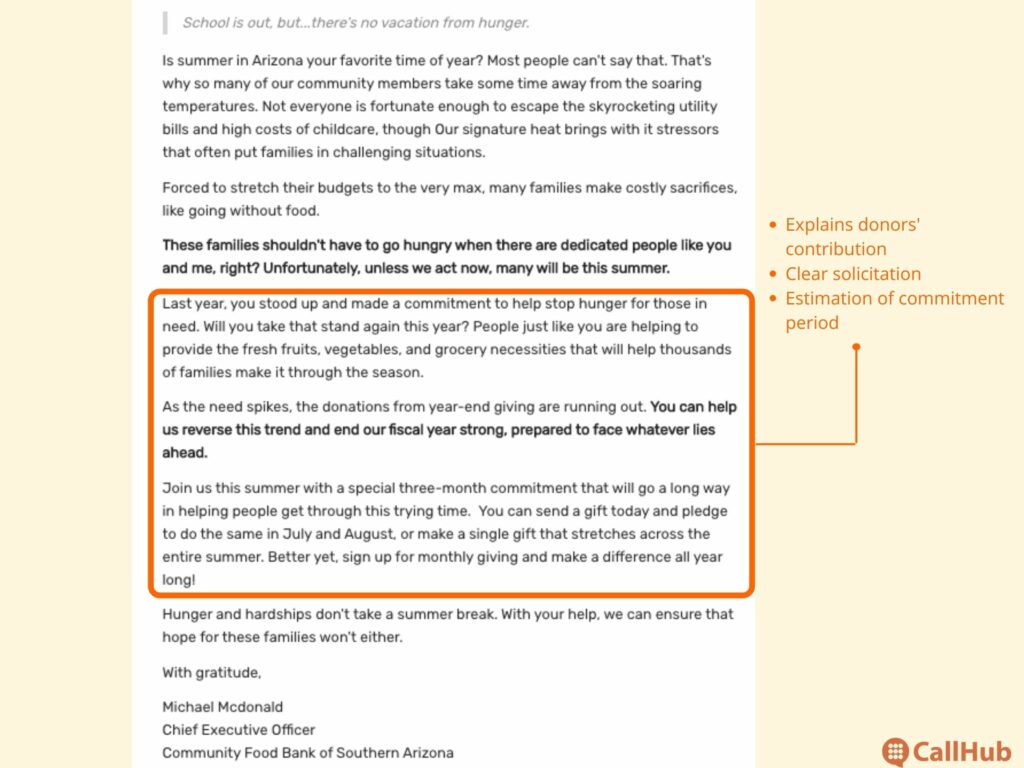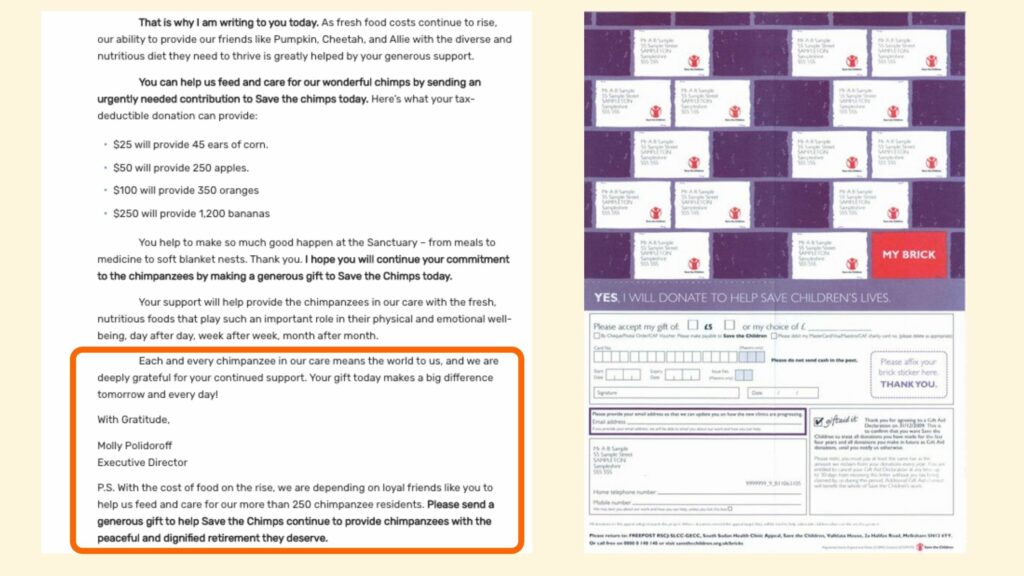Table of Contents
Online fundraising has grown year over year in the past decade. Yet, the classic fundraising letter remains an essential part of nonprofit donation appeals.
Why do donation appeal letters regain their charm in an online world?
- 70% of Americans believe direct mail is more personal than online outreach.
- A personal donation letter shows that you value the donor.
- According to the Data and Marketing Association, the direct mail customer response rate increased by 43% in 2016. The prospect response rate increased by an impressive 190% in the same year!
- It lets you make your case in detail while allowing donors to read it at leisure.
- Direct mail can give up to 29% median ROI.
Want to know your potential ROI on direct mail? Check out this calculator!
This post will cover how to craft the perfect fundraising letter that gets you that high ROI. But first, let’s look at the types of letters fundraisers commonly send out. We will then go into the details of how to structure a fundraising letter and look at real examples:
Types of fundraising letters:
- General donation appeal letters to individuals: This is the most common fundraising letter to existing donors. It is usually 1-2 pages long and solicits a donation amount suitable for an individual level.
- Fundraising letters for sponsorships: When nonprofits need event funding, they write sponsorship letters to current significant donors. These letters are often more detailed than individual fundraising letters and cover the incentives donors are eligible for.
- Formal letter for donation request to corporates: Nonprofits send fundraising letters to businesses as a foot in the door before you sign a long-term partnership agreement. These letters can be highly detailed and cover legal liabilities related to committing to such sponsorships.
- Fundraising letters with an appeal to donate items for sales/auctions: Solicitation letters cater to monetary contributions and in-kind donations of used/old items for events such as sales or auctions. These are typically sent when you want a high ROI for events but don’t have the budget to purchase these items for auctioning.
- Letters to appeal for volunteering: Lastly, direct mail to supporters can also involve a request to join your force as a volunteer. While nonprofits typically write fundraising letters requesting donations, appeals for volunteers can be sent as an option if a supporter is unable to contribute dollars (Your general donation letter can have the option to register as volunteers, or you can send a follow-up email asking to register to non-respondents).
Let’s look at how to write a fundraiser letter and take inspiration from examples of compelling fundraising letters.
How do you write a donation letter?
“How to write a letter requesting donations” is a question that perhaps every fundraiser has asked themselves. After all, you are not personally communicating with donors and lack the opportunity to clear their doubts one-on-one.
You are also making a considerably high-barrier ask, so you cannot risk losing their interest because you explained too little or elaborated too much.
These concerns might be bickering, but do not worry. Every fundraising letter, be it for major sponsorships or to donate items, is made of four fundamental parts:
- Introduction: Where you make a good impression and compel supporters to keep reading.
- The Body: Where you introduce the problem and make a case for your cause and mission.
- The Ask: This is where you convince folks to contribute and formally make your request.
- Closing: Where you explain how to donate.
Here’s how you can craft each part of the letter and make the most of your direct mail campaign:
Introduction to the fundraising letter
The introduction includes:
- Greetings and salutations to the reader.
- An introduction to the writer.
- The hook to what the letter is about.
This is the first impression of what will follow. If you lose a reader’s interest in the introduction, they may skip reading the letter any further.
Here’s how to write an introduction to a fundraising letter:
- Address readers personally: Don’t use a generic “dear supporter” or “hello patron.” Addressing a reader by their name with the right salutation is the first step to personalizing your letter, and 78% of marketers believe that personalized direct mail is extremely effective.
- Introduce yourself: Adding a human name to your introduction makes the letter look more personal and one-on-one. It is a polite way to begin a conversation and, in your case, a request.
- Script a great hook to your mission: This could include a crisis (invoking altruism), the impact you hope for (invoking passion), or the donor’s previous impact (invoking ego).
- Remind them of your previous work: Including a snippet of your previous work related to your current cause shows donors the impact you create and can motivate them to participate. This also reestablishes your position as a worthy nonprofit in their minds.
Pro-Tip: Segment your audience according to their donation history (prioritizing house files over prospects). Mention their previous contributions or remind them of other causes they have supported as a nudge to continue doing the great work for this mission. This also makes the letter more personal.

Body for your donation letter
The body is the longest and the most comprehensive part of your donation appeal letter. Its objective is to make the case about your cause. Supporters are not likely to give if you give them too few details. And they may lose interest if the letter body is neverending. To find the sweet spot, here are the things you must include in the body:
- Define the problem: Why is your issue important enough for people to donate? Your letter body should lead with (or at least include) the crisis you are trying to solve. Without a clear definition and description of the problem, your solicitation efforts will likely go in vain.
- Provide the solution: A fundraising letter can be more detailed than a text or an email. It thus makes you liable to provide details about how you can solve the problem, including the details of your plan and (if relevant), the progress you have seen so far.
- Overline: Highlight the most crucial part of your fundraising letter. The overline could be a change in the font or adding a box to bring attention to that part of the copy. It could also be a picture that breaks the monotony.
Pro-Tip: Tell a story. When you craft the letter’s narrative as a story, it hooks the reader for longer. It also fixes a face, name, or such particulars to the impact you hope to make. Here’s a guide you can use: The perfect nonprofit storytelling approach to create effective messaging that drives action.

The Ask
Finally– the ask. This is where you formally solicit your supporters’ donations, items, or sponsorship. But here, too, the focus is not on the funds you will get but rather on how they can be part of the impact. Let’s see how to pitch your solicitations in a fundraising letter:
- Explain how donors can make a difference: Donors want to feel good about giving. This can be achieved when they know how their contributions will create an impact. To achieve this, keep the ask donor-centric and focus on how they will make a difference rather than how you plan to solve a crisis.
- Clearly state your request: Following the description of the difference they make, mention the contribution you expect from them. This sets expectations and avoids people pledging micro-donations when you want them to give a larger amount.
- Provide options for other ways to help: Sometimes, people can’t give the amount you ask. And that’s fine. However, to retain donors who cannot contribute in dollars, you must provide other options to keep engagement levels steady. Some options include:
- Providing options for smaller donation amounts ($50, $100 or $150)
- Giving the option to make in-kind donations.
- Option to volunteer instead of donating money.
- Running peer-to-peer fundraisers on your behalf.
Pro-Tip: Combine your donation appeal letters with digital advertising. Campaigns that combine direct mail with one or more digital marketing efforts can yield a 118% increase in response rate (Vs. only direct mail).

You May Also Like: Tips and Tricks for an Effective Annual Appeal Letter
Closing
The final paragraph of your letter provides a dignified closure. By the time they reach the closing, the reader has made up their mind. But if they are reading the final paragraph, it usually means good news (why else would they read the entire letter if they are not interested?).
A closing to your fundraising letter should:
- Make giving easy: Provide donation links, QR codes, reply devices, shortcodes, and keywords (in case of text-to-donate).
- Include the name and signature of someone from a high position: This shows that the donor is highly valued and provides a familiar name to the solicitation letter (donors are more likely to know seasoned fundraisers or high-position managers than volunteers).
- Write a PostScript (PS): 90% of people read the PS after reading their name but before reading the letter body (refer to the image for insights on how people read a letter). This is why including a strong call to action in the PS is crucial.

Pro-Tip: Thank readers in advance for their support in the closing. This gives you a graceful exit and subtly shows your confidence in them. Additionally, this is the perfect opportunity to invoke urgency (e.g., by providing a deadline or using words like last chance) and nudge for donations.
Read Next: Donor Appreciation Letter: Everything You Need To Know To Craft The Perfect One.

Bonus! Fundraising letter template
Here’s a fundraising letter template you can base your donation appeals on:

A well-structured and worded fundraising letter is sure to bring you great success in the form of donations, sponsorships, or donated items. But your job doesn’t end there. Once you receive the donations, it’s essential to thank each donor individually and show that their contributions are appreciated.
This includes writing donor appreciation letters to your supporters. Personal letters provide a happy closure to the current fundraising efforts and contribute to donor nurturing, so they continue giving. Read our guide on how to write donor appreciation letters to retain them. Donor Appreciation Letter: Everything You Need To Know To Craft The Perfect One.
Feature Image Source: Álvaro Serrano/Unsplash.

